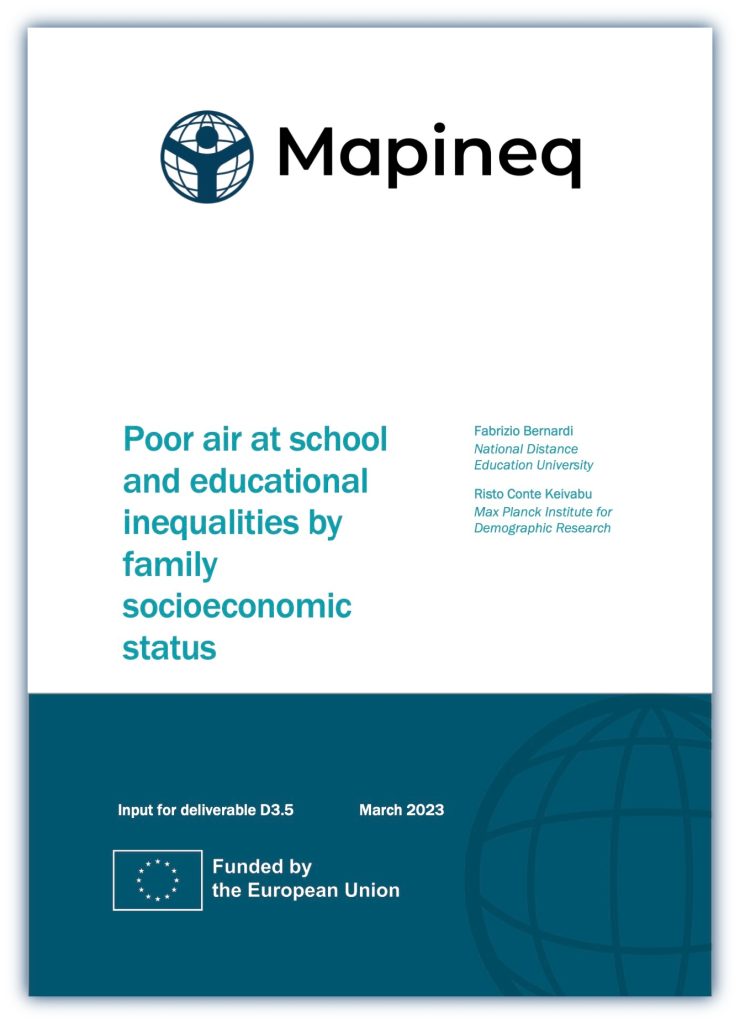Poor air at school and educational inequalities by family socioeconomic status
In this paper we study social stratification in the impact of poor air quality on educational achievement. We address two main questions: are students from socioeconomically disadvantaged families more likely to attend schools with poor air quality?, and is the effect of bad air quality for school results the same for children from high and low socioeconomic status families? We use a novel data set with test scores in math and reading for 456,508 students in 8th grade in a test administered nationally in Italy in 2019. We geocode the location of 6,882 schools and link the level of air pollution of the school, using data on fine particulate matter provided by the Atmospheric Composition Analysis Group. We find no SES gradient in the exposure to poor air at school; a small but robust negative effect of particulate matter 2.5 (PM2.5) on test scores in math but not in reading, and this effect is mostly concentrated among low SES students. Conversely, high SES students are largely unaffected by exposure to poor air quality at school. We conclude that exposure to air pollution can exacerbate inequalities in education and the intergenerational transmission of disadvantage.
By Fabrizio Bernardi and Risto Conte Keivabu

Low and high-SES students in Italy are similarly exposed to schools with poor air quality, and students in the most polluted schools had the worst test scores, especially in maths

The negative impact of air pollution on test scores was lower among high-SES students, and the differences between low and high-SES students were more prominent in the most air-polluted schools

Policies aimed at improving air quality, especially in schools are important to reduce socioeconomic inequalities in educational achievement

